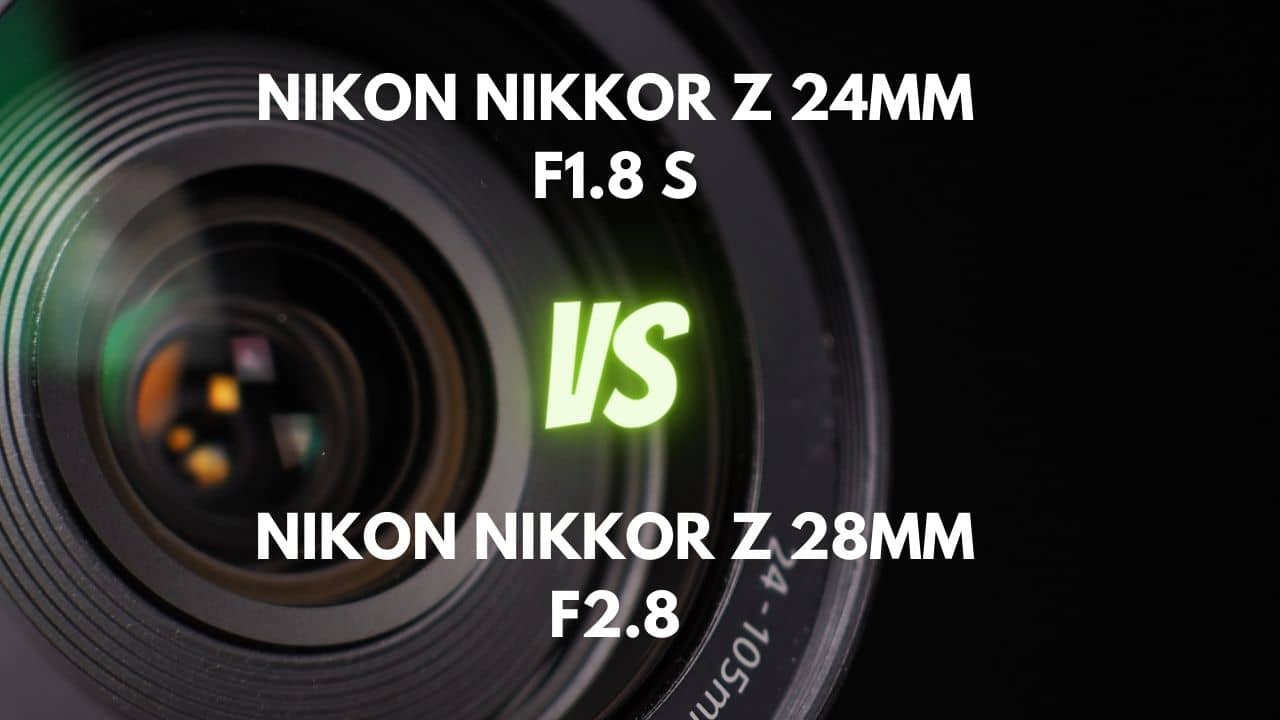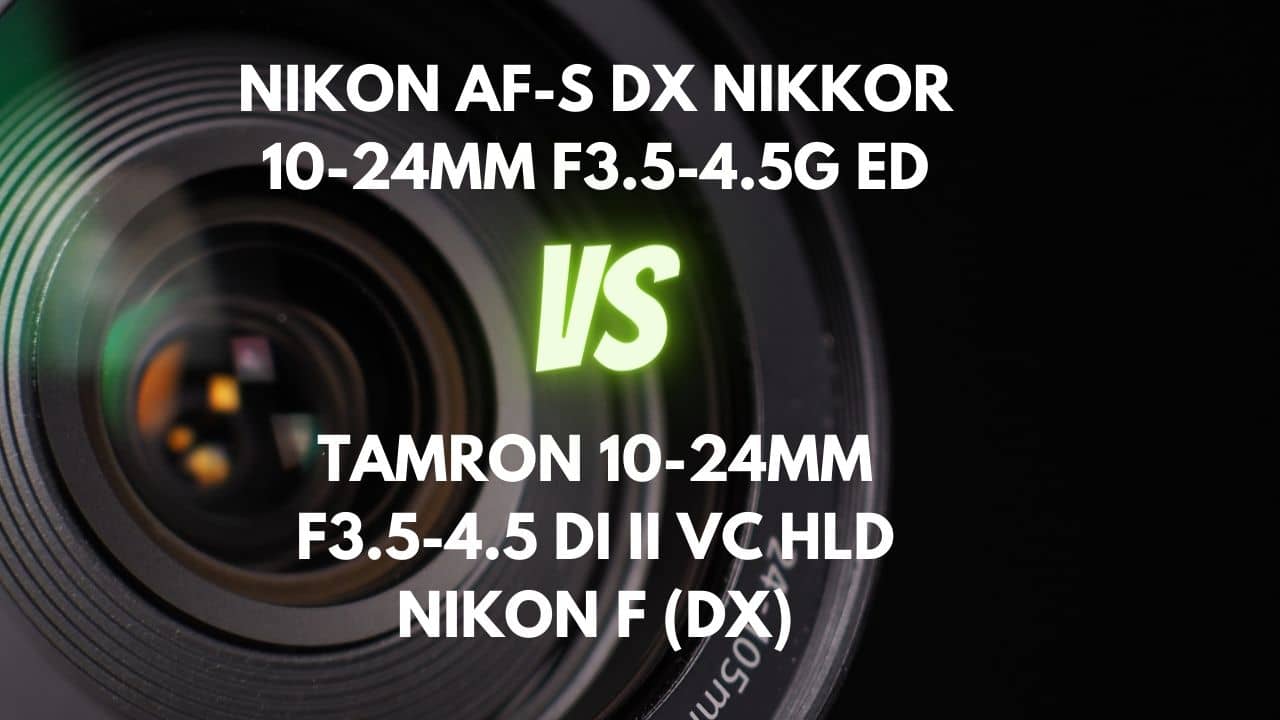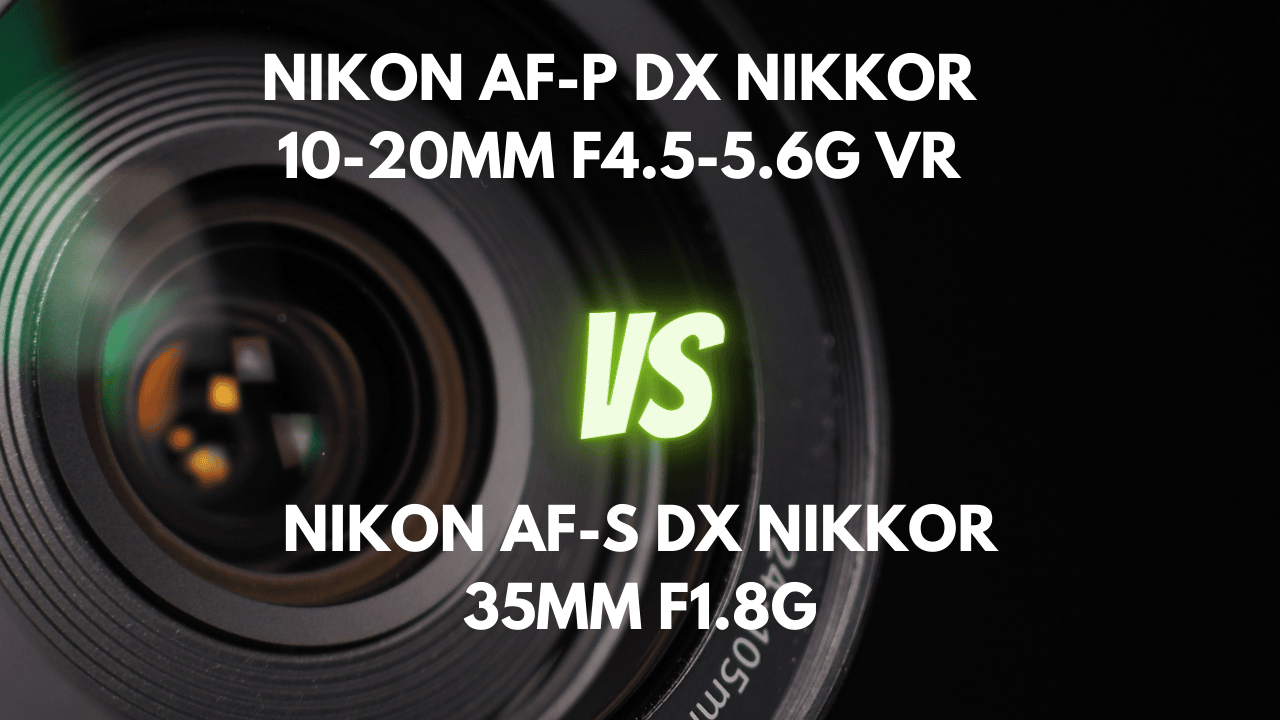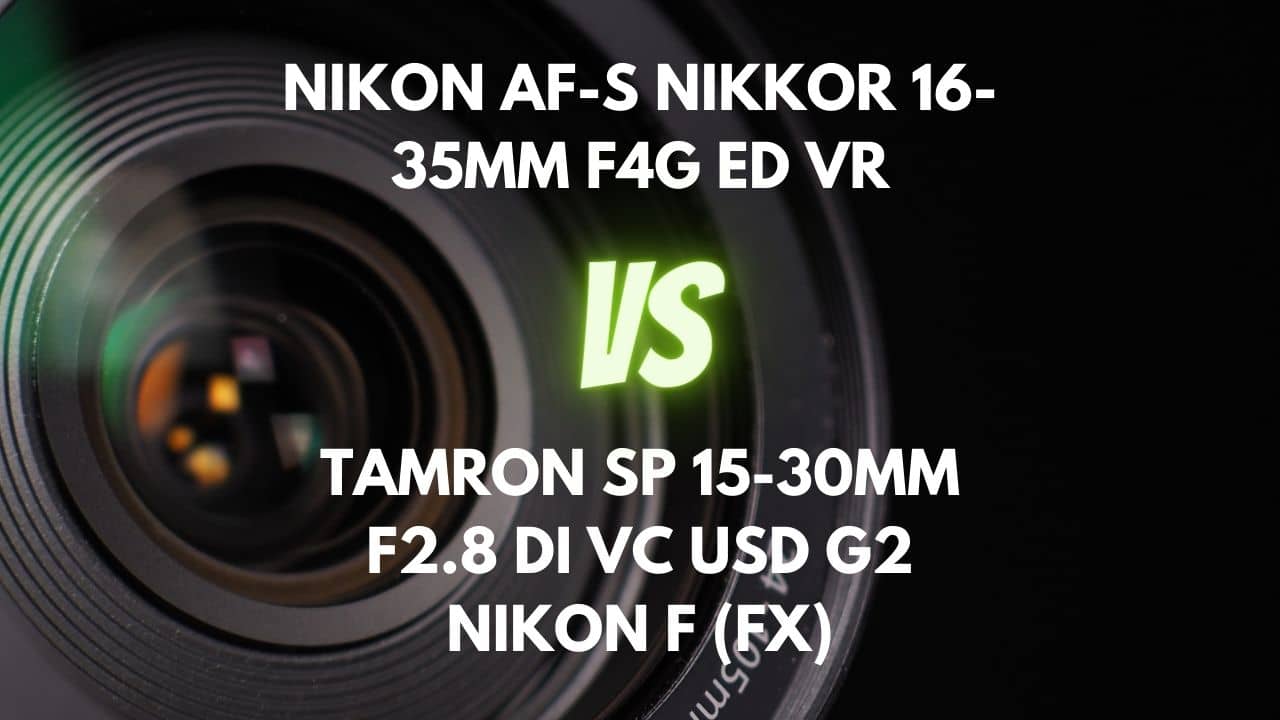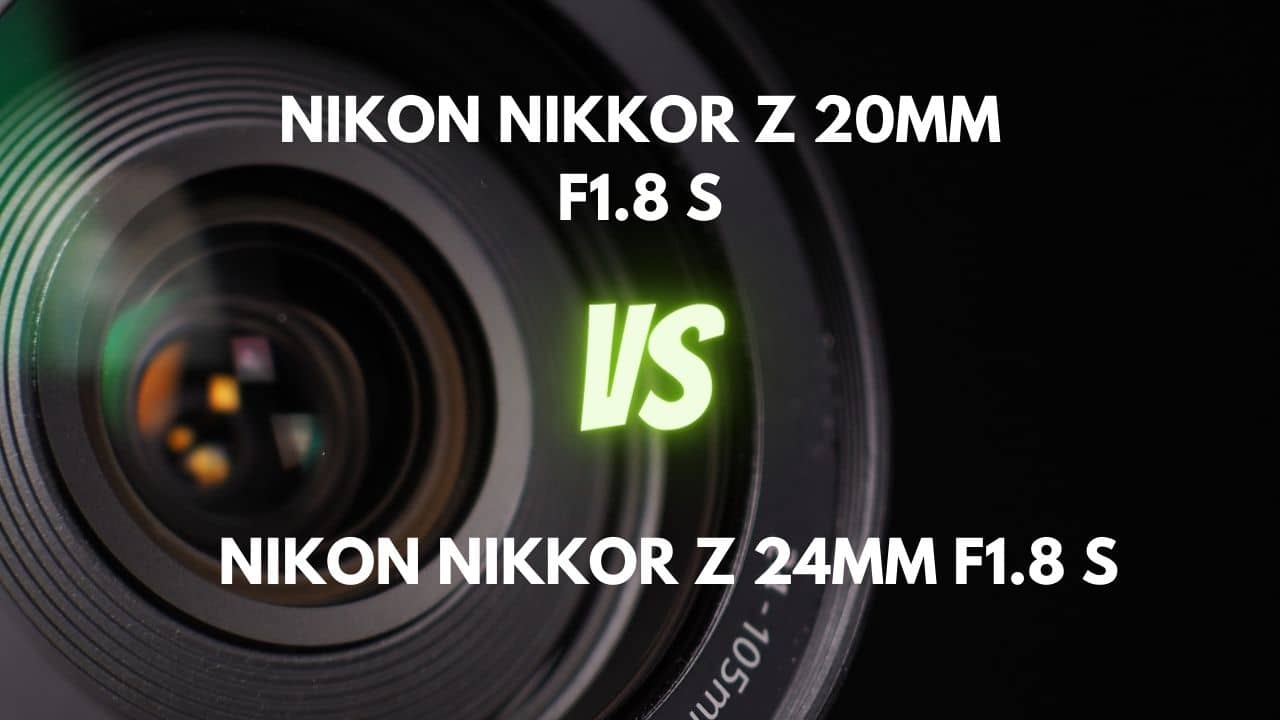In the ever-evolving realm of photography, finding the perfect wide-angle lens can feel like searching for a needle in a haystack. However, fear not, dear reader, as we dive into an exciting comparison of two popular contenders in the wide-angle lens market – the Nikon AF-P DX NIKKOR 10-20mm F4.5-5.6G VR and the Tamron 10-24mm F3.5-4.5 Di II VC HLD Nikon F (DX).
We will unravel the mysteries of their performance, build, and capabilities. So, grab a cup of your favorite beverage, sit back, and join us on this thrilling journey as we delve into the fascinating world of wide-angle lenses and find out which one emerges as the ultimate winner.
Overview
| Nikon AF-P DX NIKKOR 10-20mm F4.5-5.6G VR | Tamron 10-24mm F3.5-4.5 Di II VC HLD Nikon F (DX) | |
|---|---|---|
| Max Aperture | F4.5-5.6 | F3.5-4.5 |
| Aperture Type | Variable | Variable |
| Focal Range (mm) | 10-20 | 10-24 |
| Mount Type | Nikon F (DX) | Nikon F (DX) |
| Max Format | APS-C / DX | APS-C / DX |
| Zoom Ratio (X) | 2 | 2.4 |
The Nikon DX 10-20mm f/4.5-5.6 and the Tamron 10-24mm f/3.5-4.5 are both wide-angle zoom lenses designed for Nikon DX cameras. They share some similarities, but there are key differences that may affect your choice between the two.
The Nikon lens has a maximum aperture range of f/4.5-5.6, while the Tamron lens has a wider aperture range of f/3.5-4.5. This wider aperture allows more light to enter the camera, which can be beneficial for low-light performance. However, this might not be as crucial for landscape and architectural photography, where a deeper depth of field is often required.
Both lenses have a variable aperture, meaning the maximum aperture changes as you zoom in or out. The Nikon DX 10-20mm offers a focal range of 10-20mm with a 2x zoom ratio, while the Tamron 10-24mm has a slightly longer focal range of 10-24mm and a 2.4x zoom ratio. This extended range can provide more versatility for photographers.
Considering size, weight, and cost, lenses with larger apertures are generally bigger, heavier, and more expensive. If portability and budget are important factors, the Nikon lens might be a better fit.
In conclusion, the Tamron lens offers superior low-light performance, a slightly longer focal range. However, the Nikon lens is a more budget-friendly option.
Design and Ease of Use
| Nikon AF-P DX NIKKOR 10-20mm F4.5-5.6G VR | Tamron 10-24mm F3.5-4.5 Di II VC HLD Nikon F (DX) | |
|---|---|---|
| Diameter x Length (mm) | ⌀77×73mm | ⌀84×85mm |
| Weight (gr) | 230 | 440 |
| Filter Thread (mm) | 72 | 77 |
| Weather Sealing | No | Yes |
| Zoom Method | Rotary (extending) | Rotary (extending) |
| Zoom Lock | No | No |
| Distance Scale | No | Yes |
| DoF Scale | No | No |
| Hood Supplied | Yes | Yes |
The Nikon DX 10-20mm f/4.5-5.6 and the Tamron 10-24mm f/3.5-4.5 are both wide-angle zoom lenses designed for Nikon DX cameras. When comparing their dimensions and weight, there are notable differences that may affect your choice between the two.
The Nikon lens is more compact, with a diameter of 77mm and a length of 73mm. It is also considerably lighter, weighing just 230 grams. The compact size and lightweight nature of this lens offer several advantages, such as improved portability, better balance, easier storage, and more convenient lens swapping.
On the other hand, the Tamron lens is larger, with a diameter of 84mm and a length of 85mm. It is also heavier, weighing 440 grams. While the increased size and weight might make it slightly more cumbersome to handle, this lens offers a wider aperture range and a longer focal range, which could potentially provide better low-light performance and more versatility in certain shooting situations.
In conclusion, the Nikon lens stands out for its compact size and lightweight design, which can make it an ideal choice for photographers who prioritize portability and ease of use. However, the Tamron lens offers a wider aperture range and a longer focal range, which may be beneficial for certain types of photography.
Lens Mount and Barrel
The Nikon DX 10-20mm f/4.5-5.6 features a plastic lens mount, which is lighter and more budget-friendly compared to metal mounts. While it lacks a rubber gasket and may be more prone to wear and tear, it is an entry-level, lightweight lens with a five-year warranty, so the plastic mount should not be a major concern. Its polycarbonate plastic lens barrel contributes to its lightweight nature and affordability. The design is ergonomic, with a wide zoom ring and a thin manual focus ring. The lens barrel extends slightly when zooming, with the shortest length at around 15mm.
In contrast, the Tamron 10-24mm f/3.5-4.5 has a metal lens mount that is more durable and provides a premium, professional feel. The mount is surrounded by a weather-sealing gasket for added protection against dust and moisture. Its lens barrel, made of tough polycarbonate material, is slightly more robust than the Nikon’s. The lens changes its physical size when zooming, with full retraction occurring in the mid focal length range.
In conclusion, if portability and affordability are most important to you, the Nikon’s lightweight plastic mount and barrel may be more appealing. However, if you value durability and weather protection, the Tamron’s metal mount and weather-sealing gasket offer a superior build.
Weather Sealing
The Nikon DX 10-20mm f/4.5-5.6 lens does not have weather sealing, making it less suitable for photographers who frequently shoot in harsh environments. The absence of a gasket at the lens mount and internal seals at the rings, switches, and front of the barrel means that this lens is more vulnerable to dust, moisture, and light water splashes. Consequently, it may require additional protection in adverse weather conditions.
On the other hand, the Tamron 10-24mm f/3.5-4.5 lens features weather sealing, providing better protection against environmental elements. Its lens mount has a gasket, while internal seals are present at the rings, switches, and front of the barrel. The front element also boasts a fluorine coating that resists dust and smudges, enhancing its performance and durability in various weather conditions.
In conclusion, the weather sealing of the Tamron lens is superior to that of the Nikon lens. If you frequently shoot outdoors in challenging environments, the Tamron lens may be a better choice for its added protection and durability. However, if weather sealing is not a top priority for you, the Nikon lens might still be a suitable option.
Rings
The Nikon DX 10-20mm f/4.5-5.6 lens has a large zoom ring with a textured rubber grip that occupies most of the barrel, making it comfortable and easy to operate. Marked at 10, 12, 14, 16, and 20mm, the zoom ring offers smooth rotation. However, the slim manual focus ring near the front element is somewhat tricky to turn due to its narrow design. The lens lacks a windowed distance scale or depth-of-field indicator on the focus ring but permits autofocus override by simply rotating the focus ring at any time. While the rings are rubberized and user-friendly, the absence of a zoom lock switch on the zoom ring is noteworthy.
In contrast, the Tamron 10-24mm f/3.5-4.5 lens features a rubberized zoom ring with a smooth rotation and a narrow plastic manual focus ring that feels like plastic rubbing against plastic. The ring design incorporates raised ribs and ridges for a better grip. The abruptly flared front of the zoom ring ensures easy access.
A windowed distance scale is present on the focus ring, but depth-of-field markings are absent. Manual focusing distance is quite precise, with full manual override of the autofocus system. The zoom range extends from 10mm to 24mm, with full retraction occurring in the mid focal length range. The lens does not include an extension lock switch on the zoom ring.
In conclusion, the Nikon lens offers a more comfortable and ergonomic zoom ring design, while the Tamron lens provides a more precise manual focusing experience and a windowed distance scale. If the zoom ring is your top priority, the Nikon lens may be the better option. However, if you value precision in manual focusing and additional features like a distance scale, the Tamron lens might be the superior choice.
Switches/Buttons
The Nikon DX 10-20mm f/4.5-5.6 lens has a minimalist approach with no switches on the barrel itself. Consequently, users must rely on their camera to change focus modes and to turn off the Vibration Reduction (VR) feature. The lack of an AF/MF switch on this budget-friendly lens may pose compatibility issues with some Nikon cameras. However, manual override and fully manual focusing are still available through an electronically coupled focus ring, providing some level of flexibility and control.
On the other hand, the Tamron 10-24mm f/3.5-4.5 lens features two low-profile, yet easily accessible switches located close to the camera body. One switch toggles between autofocus (AF) and manual focus (MF) modes, while the other turns the Vibration Compensation (VC) system on or off. These switches are designed to be resistant to inadvertent changes, ensuring smooth operation during photography sessions.
In conclusion, the Tamron lens offers a superior experience regarding switches and buttons, providing users with direct control over focus modes and VC features. This design makes the Tamron lens more user-friendly and adaptable in various shooting situations. In contrast, the Nikon lens may be suitable for those who prefer a minimalistic approach and don’t mind controlling focus modes and VR settings through the camera’s menus.
Filter Thread
The Nikon DX 10-20mm f/4.5-5.6 lens sports a 72mm filter thread made of metal encircling the front element. This design facilitates easy use with conventional filters, and the non-rotating filter thread during autofocus allows for hassle-free use of polarizing or graduated filters.
In contrast, the Tamron 10-24mm f/3.5-4.5 lens features a larger 77mm filter thread constructed from high-quality materials. The front element and filter thread remain stationary during focusing and zooming, which simplifies the use of directional filters.
In conclusion, the Nikon lens’s 72mm filter thread is smaller, which might be more affordable and compatible with your existing filters. On the other hand, the Tamron lens’s 77mm filter thread is larger, offering more options for available filters at a potentially higher cost. Both lenses feature non-rotating filter threads, providing convenience when using various types of filters.
Lens Hood
The Nikon DX 10-20mm f/4.5-5.6 lens hood is a large petal-type design made of plastic. It has a bayonet mount and can be reversed over the barrel when not in use. The material and finish are of good quality, and it is easy to mount and dismount. The hood features an ergonomic bevel design and can be smoothly rotated for adjusting the direction of light.
On the other hand, the Tamron 10-24mm f/3.5-4.5 lens hood is a moderately sized plastic petal-style wide-angle hood that provides a decent amount of protection to the front lens element while minimizing flare. The interior of the hood is ribbed to reduce reflected light from entering the lens. The hood can be attached or removed while keeping the lens cap on, and it moves with the front of the lens when changing the focal length.
In conclusion, the lens hood of the Nikon offers a smoother rotation for light direction adjustment, while the Tamron lens hood provides a ribbed interior for better flare reduction. Both lens hoods feature bayonet mounts for secure attachment.
Focusing and Optical Stabilization
| Nikon AF-P DX NIKKOR 10-20mm F4.5-5.6G VR | Tamron 10-24mm F3.5-4.5 Di II VC HLD Nikon F (DX) | |
|---|---|---|
| Autofocus | Yes | Yes |
| AF Motor | Stepper motor | High/Low torque-modulated Drive |
| Rotating Front Element | Does not rotate on focusing | Does not rotate on focusing |
| Min Focus Distance | 0.22m | 0.24m |
| Max Magnification (X) | 0.17 | 0.19 |
| Full-Time Manual Focus | Yes | Yes |
| Focus Method | Internal | Internal |
Focusing Performance
The Nikon DX 10-20mm f/4.5-5.6 lens boasts a fast and quiet autofocus performance, thanks to its AF-P stepper motor. This motor effectively removes jitters and shudders from handheld video and ensures accurate focusing. The lens also features a convenient manual focus override ring for sudden adjustments. The focusing speed is reasonably fast, and the autofocus acquisition speed is impressive. It performs well in low-light situations, and the manual focus action is precise and smooth. However, the lens produces a slight hum when focusing, which might be noticeable in quiet environments.
In contrast, the Tamron 10-24mm f/3.5-4.5 lens has a varying autofocus performance, depending on the camera used. In general, it is reasonably quick and accurate. The autofocus motor emits a low whirring sound but is not overly loud. The lens incorporates Tamron’s High/Low Torque Modulated Drive Motor (HLD), which claims higher torque for still auto focusing but smoother and quieter focus for video.
The autofocus speed is not lightning fast but is sufficient for most users. The focus transitions are generally smooth, and the lens supports full-time manual focusing with a manual focus ring that is easy to turn. The lens performs well in low-light situations, thanks to its Vibration Compensation system (VC), which helps to keep handheld footage free of jitters.
In conclusion, the Nikon lens offers a faster and quieter autofocus performance, while the Tamron lens provides a more versatile focusing experience with its HLD motor and VC system. The best focusing performance for you depends on your priorities and the specific situations in which you plan to use the lens. If speed and silence are crucial, the Nikon lens might be the better choice. However, if you desire versatility and smooth focus transitions, the Tamron lens could be the ideal option.
Optical Stabilization
The Nikon DX 10-20mm f/4.5-5.6 lens features built-in optical stabilization, known as Vibration Reduction (VR). Nikon claims this technology allows you to shoot at shutter speeds 3.5 stops slower than would otherwise be possible without causing blurring due to camera shake. This feature is particularly useful for handheld shooting in lower light conditions. The VR operates silently and enables shooting at slower shutter speeds, typically around 1/10 of a second, and even as slow as 1/6 of a second, though slower shutter speeds may result in mixed outcomes.
On the other hand, the Tamron 10-24mm f/3.5-4.5 lens is equipped with Tamron’s Vibration Compensation (VC) system, which provides up to 4 stops of stabilization. This allows for sharper pictures in low light conditions and smoother video work. The VC system operates quietly and features an on/off switch on the lens body. With one mode of stabilization, the lens produces a noticeable improvement in image sharpness at slower shutter speeds. The shutter speeds at different focal lengths when stabilization is on can vary depending on the camera and shooting conditions, but the lens generally performs well in reducing camera shake and providing better image stability.
In conclusion, both lenses offer optical stabilization with the Tamron lens providing up to 4 stops of stabilization compared to the Nikon lens’ 3.5 stops. While optical stabilization is not as critical for wide-angle lenses as it is for telephoto lenses, it can still be beneficial in certain situations, such as low-light conditions or video recording. If you prioritize stronger optical stabilization, the Tamron lens is the superior choice. However, both lenses provide effective stabilization, making either option a suitable choice for various photography situations.
Image Quality
| Nikon AF-P DX NIKKOR 10-20mm F4.5-5.6G VR | Tamron 10-24mm F3.5-4.5 Di II VC HLD Nikon F (DX) | |
|---|---|---|
| Special Elements | Three aspherical + Super Integrated Coating | Broad-band Anti-reflection & fluorine coatingsLD, XLD, aspherical, and hybrid aspherical elements. |
| Diaphragm Blades | 7 | 7 |
Aberration
The Nikon DX 10-20mm f/4.5-5.6 lens suffers from noticeable chromatic aberration, particularly near the edges of the frame when shooting wide open at 10mm. However, most of it can be removed by the camera’s JPEG engine or corrected in post-processing. This lens does not have significant issues with coma, but spherochromatism can cause colored fringes on out-of-focus highlights in some situations. This issue is not a major problem and generally doesn’t heavily impact image quality.
In contrast, the Tamron 10-24mm f/3.5-4.5 lens exhibits various types of aberrations, including axial chromatic aberration, spherical aberration, and lateral chromatic aberration. Axial chromatic aberration is persistent and increases with defocusing, while spherical aberration can be reduced by stopping down one to two stops. Lateral chromatic aberration is particularly strong at 10mm and can be seen along lines of strong contrast running tangential to the image circle. Coma is also visible in the corners of the frame at wide angles but can be resolved by stopping down. Chromatic aberration is well corrected at the center of the image but is visible at the edges and corners, especially at wider apertures. Overall, these aberrations can be corrected in post-processing or reduced by stopping down.
In conclusion, both lenses exhibit some degree of aberration, with the Nikon lens having more controlled issues compared to the Tamron lens, which displays various types of aberrations. If minimizing aberrations is a priority, the Nikon lens performs better in this aspect. However, both lenses allow for post-processing or stopping down to reduce the impact of these optical imperfections on image quality.
Sharpness
Starting with the Nikon DX 10-20mm f/4.5-5.6 lens, it boasts good to very good sharpness performance. At 10mm, the lens maintains even sharpness from wide open up to f/14, peaking at around f/8-f/11 at other focal lengths such as 12, 14, 16, and 18mm. While the edge and corner sharpness at 20mm can be somewhat lackluster, the center sharpness remains impressive throughout most of the zoom range, even when shooting wide open. However, it is important to note that sharpness is affected by diffraction at f/11 and smaller apertures.
On the other hand, the Tamron 10-24mm f/3.5-4.5 lens offers good center sharpness across its entire focal range. Stopping down can improve sharpness, although the sharpest aperture depends on the focal length. At wider angles, the edges of the image are softer, particularly at wider apertures. Despite this, the lens can still produce sharp images with good detail, and the close-up image quality is also decent. Overall, the lens provides good sharpness, but some compromises may arise depending on shooting conditions and the specific focal length used.
In conclusion, the Nikon lens demonstrates more consistent sharpness performance across its zoom range compared to the Tamron 10-24mm f/3.5-4.5 lens. While both lenses can deliver sharp images, the Nikon lens appears to have an edge in terms of overall sharpness, especially in the center of the frame. Therefore, the Nikon lens would be the superior choice for sharpness between the two lenses.
Bokeh Quality
The Nikon DX 10-20mm f/4.5-5.6 lens produces a restrained and subjectively good bokeh. However, as an ultra-wide to wide zoom with a slower aperture, the bokeh can appear somewhat nervous at times, and achieving substantial bokeh is a rare occurrence. Despite this, the lens’ bokeh quality is decent and can be achieved with careful subject selection, camera settings, and composition.
On the other hand, the Tamron 10-24mm f/3.5-4.5 lens generates pleasant and reasonably smooth bokeh, particularly when used for close-up subjects. The out-of-focus specular highlights exhibit good roundness, thanks to the rounded aperture blade design. Overall, the bokeh quality of this lens is attractive and considered a good feature.
In conclusion, while bokeh quality may not be the main priority for wide-angle lenses, the Tamron lens appears to have a slight advantage in this regard. It produces a smoother and more pleasing bokeh, making it the superior choice between the two lenses in terms of bokeh quality. Nonetheless, remember that wide-angle lenses are generally used for capturing broader scenes, and bokeh may not be as crucial as in other types of lenses.
Flare/Ghosting
The Nikon DX 10-20mm f/4.5-5.6 lens handles flaring and ghosting exceptionally well. It demonstrates minimal tendencies for reduced contrast or artifact creation in images. Remarkably, when the sun is within the frame, this lens outperforms even other lenses, such as the fixed prime FX Nikkor 20mm AF-S f/1.8. Additionally, side light hitting the front glass does not cause significant issues.
Conversely, the Tamron 10-24mm f/3.5-4.5 lens features Tamron’s BBAR coating, which helps minimize flare, a common concern when shooting with bright light sources in the frame, particularly at wider angles. While flare is not entirely eliminated, it is well controlled, and streaks of flaring might be visible at narrower apertures. This lens also boasts resistance to ghosting and maintains contrast even when shooting directly into the sun.
In conclusion, both lenses perform admirably in terms of flare and ghosting control. However, the Nikon lens appears to have a slight edge, exhibiting superior performance even when compared to other lenses in challenging lighting situations. Therefore, the Nikon lens is the superior choice for handling flare and ghosting between these two options.
Vignetting
The Nikon DX 10-20mm f/4.5-5.6 lens displays significant vignetting at 10mm, especially when shooting wide open. However, this issue improves at 15mm and 20mm focal lengths. Vignetting is most pronounced at 10mm across all focal lengths but can be corrected using post-processing software. In real-life situations, vignetting appears less problematic than it might seem in sample images.
On the other hand, the Tamron 10-24mm f/3.5-4.5 lens exhibits noticeable vignetting at wider apertures, with the most pronounced effect observed at 10mm and f/3.5. Vignetting decreases as the aperture is narrowed, almost disappearing at f/8. The Lightroom lens profile can be used to correct the vignetting effect.
In conclusion, both lenses experience vignetting to varying degrees, but the Tamron lens handle it better, with vignetting significantly reduced at narrower apertures like f/8. Consequently, the Tamron lens is the superior choice when considering vignetting performance between these two options.
Distortion
The Nikon DX 10-20mm f/4.5-5.6 lens exhibits barrel distortion, more pronounced at its shortest focal length of 10mm, and decreases as you zoom in, becoming nearly non-existent at the longer end. At 10mm, the distortion is noticeable at 3.55%, but it’s still an impressive result for a consumer lens in this category. In real-world shooting, distortion is manageable and can be corrected in-camera for JPGs or using software like Lightroom Classic for RAW format. While distortion is common in wide-angle lenses, some correction might be necessary for optimal results straight from the camera.
In contrast, the Tamron 10-24mm f/3.5-4.5 lens displays barrel distortion in the 10-15mm range, with minor pincushion distortion in the 15-24mm range. At 10mm, the barrel distortion is quite obvious, measuring approximately -3.35% of barrelling, while at 24mm, the pincushion distortion is moderate. Distortion correction is possible during post-processing; however, it is a pixel-level-destructive process.
In conclusion, both lenses exhibit distortion, but the Nikon lens performs slightly better in controlling distortion, especially at longer focal lengths. Therefore, the Nikon lens is the superior choice when considering distortion performance between these two options.
Final Verdict
Taking all the previous conclusions into account, choosing between the Nikon AF-P DX NIKKOR 10-20mm F4.5-5.6G VR and the Tamron 10-24mm F3.5-4.5 Di II VC HLD Nikon F (DX) lenses depends on your priorities, budget, and the specific types of wide-angle photography you plan to engage in.
For landscape photography, the Nikon lens offers better distortion control and overall sharpness, which is essential for capturing expansive vistas and maintaining fine details. However, the Tamron lens has superior weather sealing, making it more suitable for outdoor shooting in challenging environments.
For real estate photography, the Tamron lens provides a slightly longer focal range, giving you more flexibility when capturing various interior spaces. The Tamron lens’s better vignetting control and smoother bokeh can also be advantageous for creating professional-looking real estate photos.
For environmental portraits, the Tamron lens’s wider aperture range and more pleasing bokeh may be more suitable for achieving creative background separation and highlighting subjects within a broader scene. Additionally, the Tamron lens’s superior optical stabilization can come in handy when shooting handheld portraits in low-light conditions.
In terms of build quality, usability, and features, the Tamron lens generally outperforms the Nikon lens. However, the Nikon lens is a more budget-friendly option, providing good value for money, especially if you’re looking for a lightweight and compact wide-angle lens.
Ultimately, if you have a higher budget and require weather sealing, more focal range versatility, and better low-light performance, the Tamron lens is a worthy investment. On the other hand, if you prioritize affordability, portability, and sharpness, the Nikon lens is an excellent choice for a wide variety of wide-angle photography applications.

